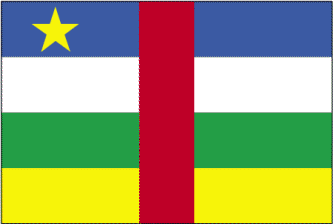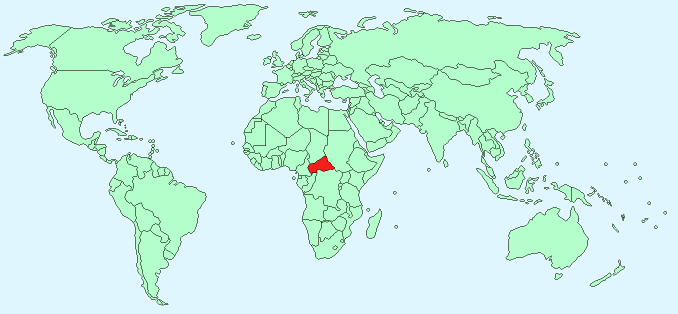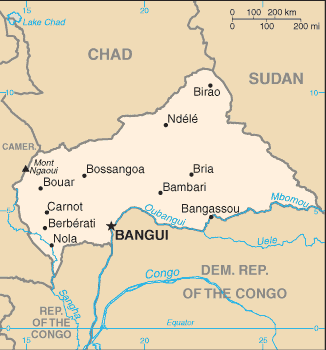Central African Republic


Continent – Africa
Region – Central Africa
Size – 622,984 km²
Geography – Mostly flat, some hills in north-east and south-west
Language – French, Sangho, tribal languages
Religion – 35% tribal beliefs, 25% Protestant, 25% Roman Catholic, 15% Muslim
Monetary Unit – Central African Franc
Natural Resources – diamonds, uranium, timber, gold, oil
Agriculture – cotton, coffee, tobacco, manioc (tapioca), yams, millet, corn, bananas; timber
Industry – gold and diamond mining, logging, brewing, textiles, footwear, assembly of bicycles and motorcycles

Neighbouring Countries – Chad, Sudan, Democratic Republic of the Congo, Republic of the Congo, Cameroon
Population – 5,277,959 (2014 estimate)
Population Growth Rate – 1.50%
Average Life Expectancy – 49
Capital City – Bangui (population 734,350)
Highest Mountain – Mont Ngaoui (1,420 m)
Longest River – Oubangui
Climate – Tropical – hot, dry winters 21°C to 34°C, warm, wet summers 21°C to 29°C
Yearly Rainfall – South -180cm (approx), North – 98cm (approx)
Plant Life – Tropical rainforest in south. grassland and savannah in north
Animal Life antelope, baboons, buffalo, elephants, black rhinoceros, gorillas, chimpanzees and other primates, leopards, snakes, bats, insects, colourful butterflies
Bird Life – rich and varied
Aquatic Life – many species of fish, crocodile and hippopotamus
Harvard Reference for this page:
Heather Y Wheeler. (2015). Central African Republic. Available: https://www.naturalhistoryonthenet.com/Facts_Figures/Country_Facts/central_african_republic.htm. Last accessed Monday, July 18, 2016
Facts and Figures Pages
